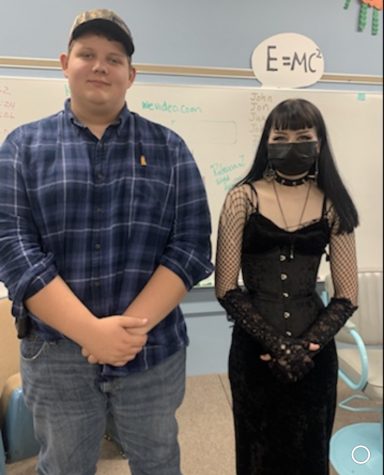Are there still dress codes?
November 15, 2021
As a student at CIHS, I am often curious about our dress code. Many upper-level students have experienced a violation or know a friend who has violated the dress code, so I spoke with our Principal Steve Gibbs and my counselor Justina Glovatsky about some questions I had about it.
Expressing myself through my clothing is vital to me, and I believe it is essential to many other students. Perhaps you have seen me around the school or other students like me appearing out of the norm. I am always amused whenever I am asked, “So . . . why do you wear all black?” For many people, wearing what they feel most comfortable makes them feel more relaxed in a public setting. When I’m following a uniform at work, for example, I do not feel like myself. I feel like I am putting up a front and lying to myself about who I am. Appearing most like myself, I find, makes me feel the most confident. And I believe that confidence in oneself will help them perform to the best of their ability.
Justina said that when students feel good about how they look and are comfortable in their outfits, they’re more able to learn and aren’t worried about being uncomfortable or self-conscious about their clothing.
Other students with different styles of clothing feel the same way. “I just wear what I’m most comfortable in, what I think says who I am and what I do,” says Ethan Gedney, a sophomore at CIHS who primarily wears an American flag baseball cap, a sweatshirt, or flannel, blue jeans, and cowboy boots.
Mr. Gibbs often stated in our interview how our school is a community. Our society consists of lots of different people with differing beliefs, backgrounds, styles, and interests. Therefore, it’s important to express ourselves and have conversations about how we fit in the community. I believe that diversity can only make a group more robust, and those that are different from their neighbors can be equally essential members of a community. Gibbs says that “everyone is on their journey.” Another thing Gibbs shared with me that I feel is crucial to hear is that “disagreement is not the equivalent of dislike.” Those in disagreement are still members of our community, and we should all still be able to express ourselves.
In a school environment, things are only a little bit different. Mr. Gibbs and I talked about the first amendment in schools. “Anything that takes away from our ability to reach our daily goal to teach and learn, anything that is distracting to our goal. Anything advertising illegal products or activity,” Gibbs states, is inappropriate dress in a school environment. Justina answers similarly to my questions about dress code violations. “Dress code is there to respect others,” she says. “Something that could be disrespectful and inappropriate to wear would depict swearing language, racially offensive content, sexual content, etc. Other violations would be shorts/skirts that are too short or shirts that are too low.” Both staff members discussed the importance of respecting one another in our school, and dress that could be disrespectful to other people violates our dress code.
When I asked my counselor about the punishment of violating a dress code, she shared with me that dress code violations should include a conversation about why the clothing isn’t school-appropriate. There is a time and place for clothing, and some clothes are just not for school. If a student continues to wear Something they’ve been asked not to, Justina says maybe they would have a restricted lunch or detention. If the material is highly graphic/inappropriate, or the clothes are extremely revealing, the student is asked to change or put another article of clothing on. With both Gibbs and Justina, we discussed why the conversation piece for a dress code violation is most important. Gibbs says again, “Our first goal is education. We want to provide the opportunity for the student to solve the problem. We want to raise a generation of problem solvers. And we will always support the students on how they need to solve the problem.”